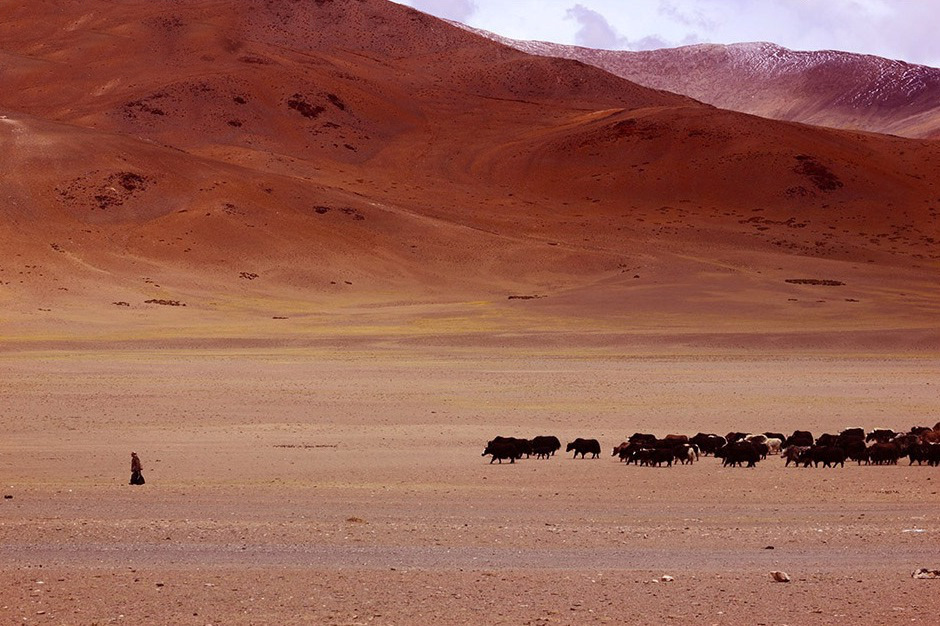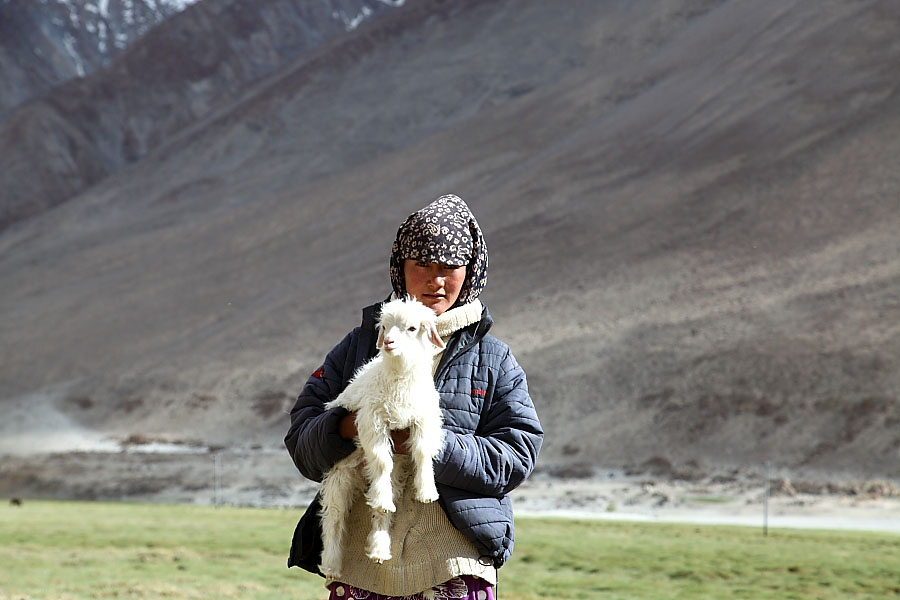Changpa on:
[Wikipedia]
[Google]
[Amazon]


 The Changpa or Champa (
The Changpa or Champa (


 The Changpa or Champa (
The Changpa or Champa (Changthang
The Changtang (alternatively spelled Changthang or Qangtang) is a part of the high altitude Tibetan Plateau in western and northern Tibet extending into the southern edges of Xinjiang as well as southeastern Ladakh, India, with vast highlands and g ...
: ཆངཔ) are a semi-nomadic Tibetan people
The Tibetan people (; ) are an East Asian ethnic group native to Tibet. Their current population is estimated to be around 6.7 million. In addition to the majority living in Tibet Autonomous Region of China, significant numbers of Tibetans live ...
found mainly in the Changtang
The Changtang (alternatively spelled Changthang or Qangtang) is a part of the high altitude Tibetan Plateau in western and northern Tibet extending into the southern edges of Xinjiang as well as southeastern Ladakh, India, with vast highlands and g ...
in Ladakh
Ladakh () is a region administered by India as a union territory which constitutes a part of the larger Kashmir region and has been the subject of dispute between India, Pakistan, and China since 1947. (subscription required) Quote: "Jammu and ...
, India
India, officially the Republic of India (Hindi: ), is a country in South Asia. It is the seventh-largest country by area, the second-most populous country, and the most populous democracy in the world. Bounded by the Indian Ocean on the so ...
. A smaller number resides in the western regions of the Tibet Autonomous Region
The Tibet Autonomous Region or Xizang Autonomous Region, often shortened to Tibet or Xizang, is a Provinces of China, province-level Autonomous regions of China, autonomous region of the China, People's Republic of China in Southwest China. I ...
and were partially relocated for the establishment of the Changtang Nature Reserve
Chang Tang National Nature Reserve () lies in the northern Tibetan Plateau. It is the third-largest land nature reserve in the world, after the Northeast Greenland National Park and Kavango-Zambezi Transfrontier Conservation Area, with an area o ...
and Baltistan
Baltistan ( ur, ; bft, སྦལ་ཏི་སྟཱན, script=Tibt), also known as Baltiyul or Little Tibet ( bft, སྦལ་ཏི་ཡུལ་།, script=Tibt), is a mountainous region in the Pakistani-administered territory of Gilg ...
region of Pakistan
Pakistan ( ur, ), officially the Islamic Republic of Pakistan ( ur, , label=none), is a country in South Asia. It is the world's List of countries and dependencies by population, fifth-most populous country, with a population of almost 24 ...
. As of 1989 there were half a million nomads living in the Changtang area.
Changpa of the Tibet Autonomous Region
The homeland of the Changpa is a high altitudeplateau
In geology and physical geography, a plateau (; ; ), also called a high plain or a tableland, is an area of a highland consisting of flat terrain that is raised sharply above the surrounding area on at least one side. Often one or more sides ha ...
known as the Changtang
The Changtang (alternatively spelled Changthang or Qangtang) is a part of the high altitude Tibetan Plateau in western and northern Tibet extending into the southern edges of Xinjiang as well as southeastern Ladakh, India, with vast highlands and g ...
, which forms a portion of western and northern Tibet extending into southeastern Ladakh, and ''Changpa'' means "northerners" in Tibetan
Tibetan may mean:
* of, from, or related to Tibet
* Tibetan people, an ethnic group
* Tibetan language:
** Classical Tibetan, the classical language used also as a contemporary written standard
** Standard Tibetan, the most widely used spoken dial ...
. Unlike many other nomadic groups in Tibet, the Changpa are not under pressure from settled farmers as the vast majority of land they inhabit is too inhospitable for farming.
Most of the Tibetan Changtang is now protected nature reserves consisting of the Changtang Nature Reserve
Chang Tang National Nature Reserve () lies in the northern Tibetan Plateau. It is the third-largest land nature reserve in the world, after the Northeast Greenland National Park and Kavango-Zambezi Transfrontier Conservation Area, with an area o ...
, the second-largest nature reserve in the world, and four new adjoining smaller reserves totalling 496,000 km2 (191,507 sq. miles) of connected Nature Reserves, which represents an area almost as large as Spain
, image_flag = Bandera de España.svg
, image_coat = Escudo de España (mazonado).svg
, national_motto = ''Plus ultra'' (Latin)(English: "Further Beyond")
, national_anthem = (English: "Royal March")
, i ...
, and bigger than 97 countries. Since the reserves have been established there has been a welcome increase in the numbers of endangered species. The protected areas stretch across parts of the Tibet Autonomous Region
The Tibet Autonomous Region or Xizang Autonomous Region, often shortened to Tibet or Xizang, is a Provinces of China, province-level Autonomous regions of China, autonomous region of the China, People's Republic of China in Southwest China. I ...
, Xinjiang
Xinjiang, SASM/GNC: ''Xinjang''; zh, c=, p=Xīnjiāng; formerly romanized as Sinkiang (, ), officially the Xinjiang Uygur Autonomous Region (XUAR), is an autonomous region of the People's Republic of China (PRC), located in the northwest ...
and Qinghai
Qinghai (; alternately romanized as Tsinghai, Ch'inghai), also known as Kokonor, is a landlocked province in the northwest of the People's Republic of China. It is the fourth largest province of China by area and has the third smallest po ...
in China
China, officially the People's Republic of China (PRC), is a country in East Asia. It is the world's most populous country, with a population exceeding 1.4 billion, slightly ahead of India. China spans the equivalent of five time zones and ...
.
Changpa of Ladakh
The Changpa ofLadakh
Ladakh () is a region administered by India as a union territory which constitutes a part of the larger Kashmir region and has been the subject of dispute between India, Pakistan, and China since 1947. (subscription required) Quote: "Jammu and ...
are high altitude pastoralists, raising mainly yaks and goats. Among the Ladakh Changpa, those who are still nomadic are known as Phalpa, and they take their herds from in the Hanley Valley to the village of Lato. Hanley is home to six isolated settlements, where the sedentary Changpa, the Fangpa reside. Despite their different lifestyles, both these groups intermarry. The Changpa speak Changskhat, a dialect of Tibetan
Tibetan may mean:
* of, from, or related to Tibet
* Tibetan people, an ethnic group
* Tibetan language:
** Classical Tibetan, the classical language used also as a contemporary written standard
** Standard Tibetan, the most widely used spoken dial ...
, and practice Tibetan Buddhism
Tibetan Buddhism (also referred to as Indo-Tibetan Buddhism, Lamaism, Lamaistic Buddhism, Himalayan Buddhism, and Northern Buddhism) is the form of Buddhism practiced in Tibet and Bhutan, where it is the dominant religion. It is also in majo ...
.
Only a small part of Changthang crosses the border into Ladakh, in the India
India, officially the Republic of India (Hindi: ), is a country in South Asia. It is the seventh-largest country by area, the second-most populous country, and the most populous democracy in the world. Bounded by the Indian Ocean on the so ...
n union territory of Jammu and Kashmir. It is, however, on a historically important route for travelers journeying from Ladakh to Lhasa
Lhasa (; Lhasa dialect: ; bo, text=ལྷ་ས, translation=Place of Gods) is the urban center of the prefecture-level city, prefecture-level Lhasa (prefecture-level city), Lhasa City and the administrative capital of Tibet Autonomous Regio ...
, and now has many different characteristics due to being part of India. Historically, the Changpa of the Ladakh would migrate with their herds into Tibet, but with Chinese takeover of Tibet, this route has been closed.
, the Changpa were classified as a Scheduled Tribe
The Scheduled Castes (SCs) and Scheduled Tribes (STs) are officially designated groups of people and among the most disadvantaged socio-economic groups in India. The terms are recognized in the Constitution of India and the groups are designa ...
under the Indian government's reservation program of affirmative action.
Changpas and Their Goats
For many Changpas, rearing of animals, and consuming and selling their produce (milk and its products, hair and meat) is the only means of livelihood. The Changpas rear the highly pedigreed and prized Changra goats (Capra Hircus) that yield the rare Pashmina (Cashmere) fibre. The Changra goats are not raised for their meat but for their fibre (pashm). The pashmina fibre (Pashm inPersian
Persian may refer to:
* People and things from Iran, historically called ''Persia'' in the English language
** Persians, the majority ethnic group in Iran, not to be conflated with the Iranic peoples
** Persian language, an Iranian language of the ...
) is the finest fibre of all goat hair.
Documentary
A documentary Riding Solo to the Top of the World was made by Gaurav Jani. Another documentary "The Nomadic Night" depicting the life of Changpas was made by Marianne Chaud.References
{{Authority control Ladakh Tibet Baltistan Social groups of Jammu and Kashmir Ethnic groups in China Ethnic groups in Pakistan Tibetan people Modern nomads Pastoralists Scheduled Tribes of Jammu and Kashmir Scheduled Tribes of India